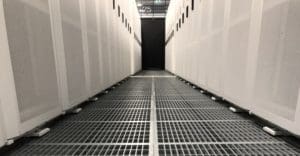Airflow optimisation is crucial for enhancing energy efficiency and maximising the performance of your cooling infrastructure. At EziBlank, we understand the importance of effective airflow management in reducing energy consumption while ensuring your data centre operates at peak efficiency. Our innovative blanking panels are designed to seamlessly integrate with your existing systems, offering a quick and easy installation that transforms your infrastructure investment into a powerhouse of reliability and cost savings. Let us help you take your operational efficiency to the next level by optimising airflow and managing your core assets with confidence.
How Server Blanking Panels Improve Data Center Efficiency
Optimising data centre efficiency is a crucial task, and server blanking panels are an often-overlooked solution that plays a significant role. These panels help in managing airflow within server racks, preventing hot air recirculation and ensuring that cooling systems operate more effectively. By maintaining the proper thermal environment, blanking panels contribute to reduced energy consumption and lower operational costs, making them an essential component for data centres aiming for peak performance and sustainability.
Read More
Hot Aisle vs Cold Aisle Containment
Hot aisle and cold aisle containment are two critical strategies used in data centres to enhance cooling efficiency and reduce energy consumption. In a cold aisle containment setup, cold air is contained within the aisle where the fronts of the server racks face each other, ensuring that only cool air is delivered directly to the equipment. This prevents the mixing of cold air with hot exhaust air, improving cooling efficiency. Conversely, hot aisle containment involves enclosing the aisle where the backs of the servers expel hot air. This containment captures and directs the hot air back to the cooling systems, preventing it from mixing with the cool air in the room. Both methods are effective, but the choice between hot and cold aisle containment depends on the specific design and cooling needs of the data centre. Implementing either strategy can lead to significant improvements in energy efficiency and overall system performance.
Read More
Airflow Management Products
Airflow management products are essential tools for optimising cooling efficiency and maintaining the performance of data centres. These products include blanking panels, which are used to cover unused spaces in server racks, preventing hot air from recirculating and ensuring that cool air is directed precisely where it’s needed. Perforated floor tiles are another key product, allowing controlled cool air delivery from beneath the raised floor to the servers. Additionally, air curtains and containment systems, such as hot and cold aisle containment solutions, help separate hot and cold air streams, further enhancing cooling efficiency. By implementing these airflow management products, data centres can reduce energy consumption, improve equipment longevity, and maintain optimal operating conditions.
Read More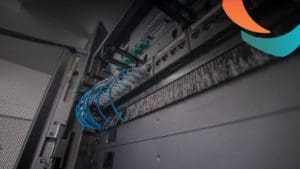
Hot Aisle Containment Solutions & Products
Hot aisle containment solutions typically include barriers, doors, and ceiling panels that effectively seal off the hot aisle, creating a controlled environment where the separation of hot and cold air is meticulously maintained. This separation ensures that hot exhaust air is directed away from the servers and into return air ducts, preventing it from mixing with the cool intake air and thereby enhancing the efficiency of the cooling system. Implementing these solutions not only significantly reduces energy consumption and lowers cooling costs but also enhances the overall performance, reliability, and lifespan of the data centre’s infrastructure, making it a vital strategy for modern data centres aiming to optimise their operations.
Read More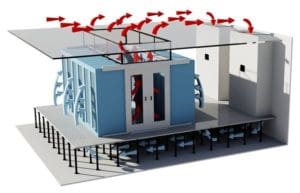
How to Manage Airflow in a Data Center
Managing airflow in a data centre is crucial for maintaining optimal cooling efficiency and ensuring the longevity of equipment. Effective airflow management begins with the strategic placement of blanking panels in server racks to eliminate gaps, which prevents hot air from recirculating and ensures that cool air is directed precisely where it’s needed. Implementing hot and cold aisle containment systems further enhances airflow by separating the hot exhaust air from the cool intake air, reducing the workload on cooling systems. Proper cable management is also essential to avoid obstructions that can disrupt airflow patterns. Additionally, using perforated floor tiles in the raised floor environment helps channel cool air directly to the servers. Regular monitoring and adjustments based on real-time data are necessary to maintain efficient airflow and adapt to changes in the data centre’s layout or load. These strategies collectively help optimise cooling, reduce energy consumption, and improve the overall performance of the data centre.
Read More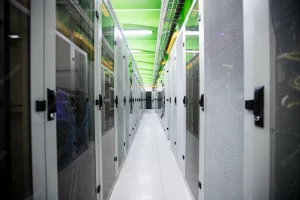
Blanking Panels: The Ultimate Guide
Blanking panels are a crucial yet often overlooked component in data centre management, playing a vital role in optimising airflow and enhancing energy efficiency. These panels are designed to fill the empty spaces in server racks, preventing the recirculation of hot air into the cold aisle, which can otherwise lead to hotspots and reduced cooling efficiency. By directing cool air precisely to where it’s needed and ensuring that hot air is properly expelled, blanking panels help maintain optimal operating temperatures, reduce the workload on cooling systems, and ultimately lower energy costs. Available in various sizes and materials, blanking panels are easy to install and offer a cost-effective solution for improving data centre performance. Regular use and proper installation of blanking panels not only contribute to a more efficient and reliable data centre but also extend the lifespan of critical IT equipment.
Read More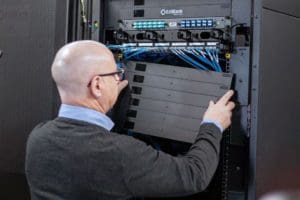
What is Cold Aisle Containment
Cold aisle containment is a data centre cooling strategy designed to improve energy efficiency and optimise temperature control. In this setup, the cold aisle, where the fronts of the server racks are located, is enclosed to prevent the mixing of cold air with the hot exhaust air from the servers. This containment system ensures that the cool air from the air conditioning units is directed exclusively towards the servers' intake, maximising cooling efficiency. By containing the cold aisle, data centres can maintain lower temperatures with less energy, reducing the workload on cooling systems and lowering overall energy consumption. This approach not only improves the performance and reliability of the equipment but also contributes to significant cost savings and a more sustainable data centre operation. Cold aisle containment is particularly effective in high-density data centres where cooling demands are substantial.
Read MoreThe Basics of Airflow Management
Airflow management is a fundamental aspect of data centre design that focuses on optimising the cooling process to ensure that IT equipment operates efficiently and reliably. The primary goal is to prevent the mixing of hot and cold air within the data centre, which can lead to hotspots and inefficient cooling. Key strategies include the use of blanking panels to seal off unused rack spaces, directing cool air to where it’s needed most and preventing hot air from recirculating. Additionally, hot and cold aisle containment systems are employed to physically separate the cold intake air from the hot exhaust air, further improving cooling efficiency. Effective airflow management reduces the energy required for cooling, lowers operational costs, and enhances the overall performance and lifespan of data centre equipment.
Read More
High performance directional floor tiles for high density equipment racks
High-performance directional floor tiles are a critical component in data centre design, specifically engineered to optimise airflow and cooling efficiency. These tiles are strategically placed within raised floor systems to direct cool air from the underfloor plenum towards the server racks, ensuring that the air reaches the equipment that needs it most. By guiding airflow precisely, directional floor tiles help maintain consistent temperatures across the data centre, prevent hotspots, and reduce the workload on cooling systems. This leads to more efficient cooling, lower energy consumption, and improved overall performance of the data centre. Incorporating these tiles into a data centre's design is an effective way to enhance both energy efficiency and operational reliability.
Read More